What Do Biblically Accurate Angels Look Like?
November 2022
When most people think of angels, a mental picture of a huge glowing human-like figure in white robes, massive white wings, and perhaps a halo, immediately comes to mind.
Some people even imagine angels like cherubims to look like little plump children with halos, tiny wings, and white loincloths, floating around on clouds with their harps.
This ideology was greatly influenced and it gained popularity from the depiction of angels in Christian art and media over the years.
However, it is inaccurate by biblical standards. Though the Bible doesn’t give a specific form for all angels, it does describe a few of them and this description is very different from what many people have imagined them to be.
The Old Testament, the book of Revelations, as well as a few other texts, give angelic descriptions contrary to what most people have come to know. That is what we will explore in this article:
What do real angels look like according to the Bible? What are their features?
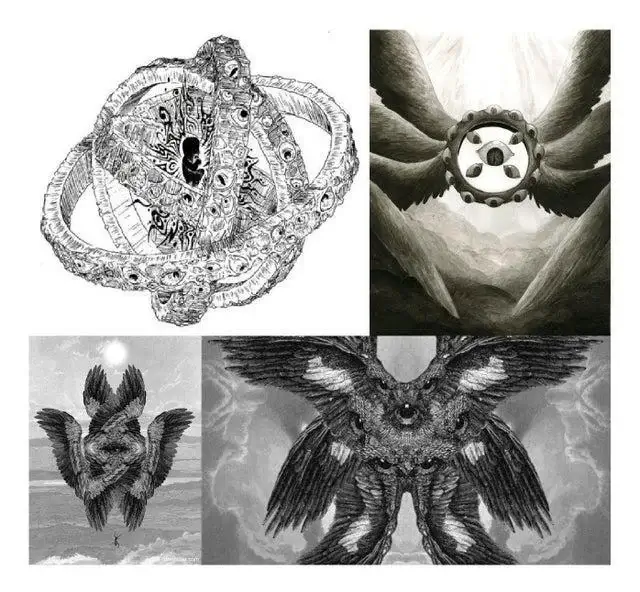
Biblical Description of Angels
To lay a foundation on what biblically accurate angels look like, first of all, take a look at what the Scriptures say about them.
- They are spirit beings and thus immortal.
Luke 20:36 says,
“and they can no longer die; for they are like the angels. They are God’s children, since they are children of the resurrection.”
Angels have been around even before the earth began. They do not die because they are spirits, just like God is.
- They are messengers.
Hebrews 1:14 says,
“Are not all angels ministering spirits sent to serve those who will inherit salvation?”
They carry out God’s command on earth. They pass on God’s messages, just like they did in the case of Lotand Mary. They guard us (Psalm 91:11), and even show up in human form to render help to people on the earth. Whatever is the will of the Father, they go on to carry it out.
- Some are warring angels and those meant for destruction.
Psalms 78:49 reads,
“He unleashed against them his hot anger, his wrath, indignation, and hostility— a band of destroying angels.”
Biblically accurate angels makeup God’s heavenly army. They constitute the warriors that went to war in Heaven before Satan’s fall, and they can still provoke war and destruction at God’s command.
- They have emotions.
Old Testament angels were desirous of the women of the earth and so mated with them and created Nephilim and giants.
They also had the choice to choose to rebel against God with satan or not. This means they possess a will and even desire.
- They are not to be worshipped.
A biblical angel is God’s messenger or servant. As awe-inspiring as they are, they point back to the Lord and are not to be worshipped in place of Him.
An angel in Revelation 22:9 reinforces this by saying to John,
“You must not do that! I am a fellow servant with you and your brothers the prophets, and with those who keep the words of this book. Worship God.”
They do not take any glory or any form of worship in God’s stead.
Biblically Accurate Angels Appearances
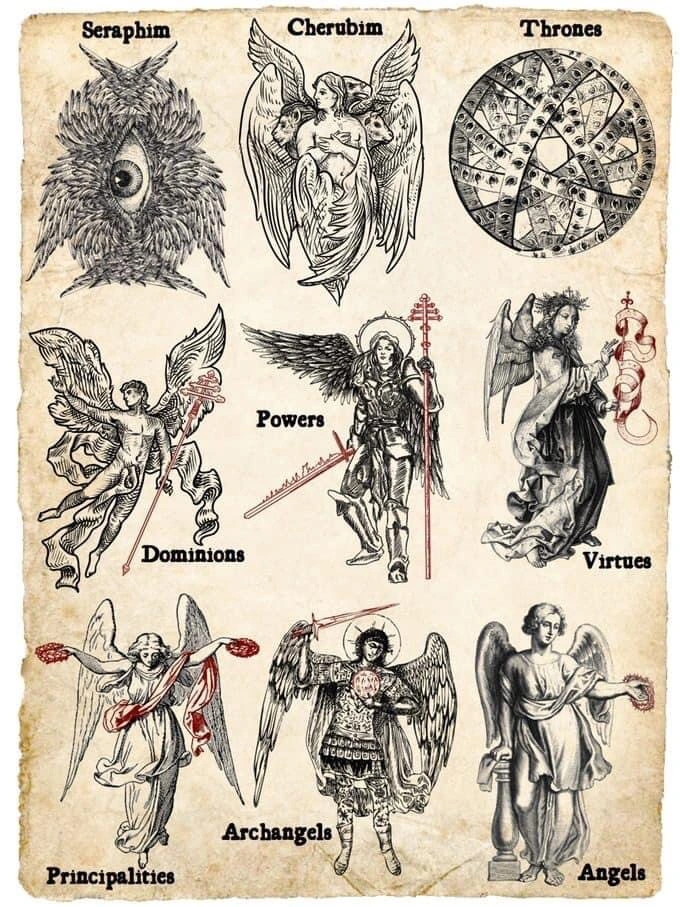
Revelation 4:8 mentions four living creatures before God’s throne that had six wings and were covered with eyes all around, even under their wings.
In Ezekiel 1:16-18, Ezekiel also describes creatures that are like “a wheel within a wheel with each of their four rims filled with eyes all around” These particular angels serve as the wheels of God’s throne.
Ezekiel also describes other angels called cherubims, that have four wings and four faces, one of a lion, an ox, a man, and an eagle. (Ezekiel 10:14)
On the other hand, some biblically accurate angels also appeared to men in the form of humans. Daniel describes the one who appeared to him as ‘having the form of a man’ (Daniel 8:15).
In Genesis 18:22, the three angels who appeared to Abraham also looked like human travellers and that was why he was hospitable to them. The same angels led Lot and his family out of the city of Sodom and Gomorrah.
In the New Testament, the ones who were at Jesus’ tomb on the morning of His resurrection were described to have been ‘two men in dazzling clothes’ (Luke 24:4)
When Jesus ascended to heaven in Acts 1:10, it was recorded that there were two men with white cloth who addressed His disciples. Biblical scholars naturally assume them to be angels.
You can note that the Bible consistently gives a bizarre description of angels when it comes to revealing the glory of heaven to men like John, Daniel, and Ezekiel.
But when it came to earthly errands, all the people who saw them, saw them in a form they could relate to.
This tells us that they can probably take up any form because they are spirits, but God makes some simple things our minds still can’t comprehend.
Just imagine one of the bizarre-looking angels around God’s throne appearing to a human to give them His message. The words ‘fear not’ wouldn’t do the slightest thing to quell their fears. They’d probably have a heart attack on the spot from fright or take off screaming their heads off.
Taking on a human-like figure helps people focus on God’s message, rather than the messenger.
The Hierarchy of Biblical Angels
First-tier Angels
- Seraphim:
Their name translates to mean ‘the burning ones’. They are described in Isaiah 6:2 as having six wings; 2 to cover their feet, 2 for their flight, and 2 covering their face. They are attendants at God’s throne and praise Him forever.
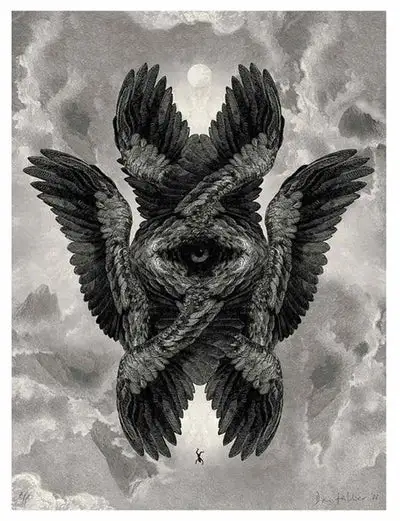
- Cherubim.
Ezekiel 1:10, In Ezekiel’s vision of God Cherubims are described as having four wings, 2 for covering their feet and 2 for flight and have 4 faces: human, lion, ox and an eagle Their name means ‘fulfillment of wisdom’. The devil was once a cherub.
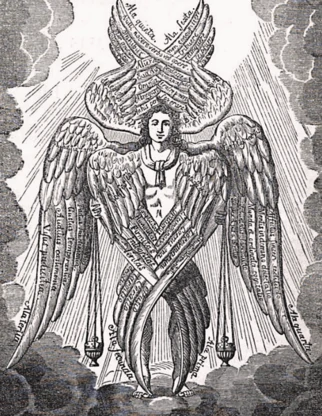
- Thrones or Ophanim.
These beings bear up God’s throne. They are described by Ezekiel as wheels within wheels and have eyes all over their body. Like the Seraphim, they also chant God’s glory. They’re the most unique in appearance compared to others.
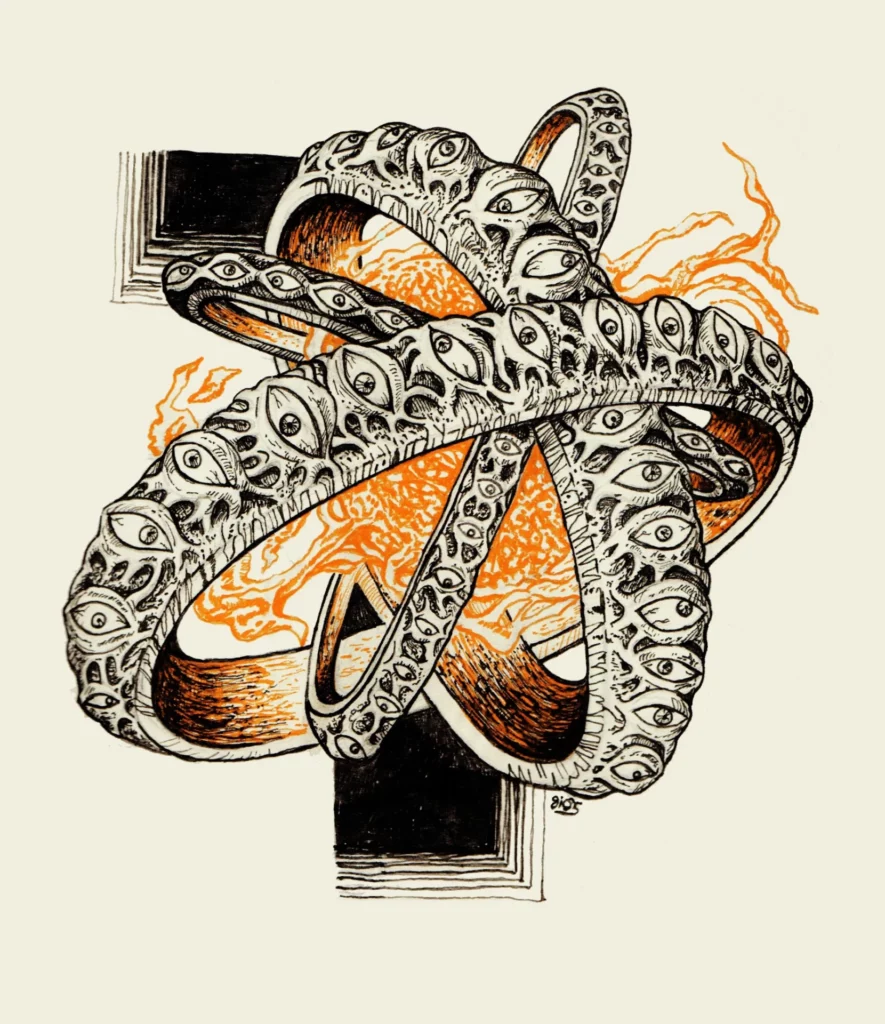
Second-tier Angels
This tier of biblical angels goes forth to fulfill God’s plan in the world.
They include Dominions, Virtues, and Powers.
- Dominions:
Mentioned in Ephesians 1:21, they lord over humanity and the remaining choir of angels.
- Virtues:
Also mentioned in Ephesians 1:21, they are majorly associated with control over the elements. They also go on the earth in human form after receiving orders from God to bring help or miracles to humans. Their primary appearance is a beam of light.
- Powers:
They are the warring beings and are mentioned in Ephesians 6:12. They are also tasked with governing the natural order.
Third-tier Angels
This tier of angels interact with humans more closely than the rest.
They include Principalities, Archangels, and Angels.
- Principalities:
They guard over places and groups like nations, states, communities, and churches.
- Archangels:
These are leader angels. Angels like Michael, Gabriel, and Raphael fall under this category. They are tasked with carrying out God’s specific plans.
- Angels:
Regarded as the foot soldiers of heaven, they work the most closely with humans.
To answer the question of ‘what is the highest level of angel among these’? The Seraphim is believed to be the highest in the rank of biblically accurate angels.
Why Angels Look The Way They Do
The popular image of angels with flowing white robes, halos, and beautiful wings, as seen in art and fiction, does indeed differ from the descriptions of angels found in some religious texts, particularly in the Judeo-Christian tradition. This discrepancy can be attributed to several factors:
- Artistic Interpretation: Much of the angelic imagery in art and culture has been shaped by artistic interpretation and creativity. Artists have often depicted angels in ways that are visually appealing and relatable to human sensibilities. These artistic representations may not necessarily align with the descriptions of angels found in religious texts.
- Symbolism and Iconography: The traditional image of angels with beautiful wings and halos serves as a symbol of purity, divinity, and the connection between heaven and earth. These visual cues are used to convey spiritual concepts and may not necessarily reflect the literal appearance of angels.
- Comfort and Reassurance: Many depictions of angels in popular culture emphasize their comforting and reassuring qualities. This is done to provide solace and hope to people who encounter these images in times of need or distress. Angels are often seen as protectors and messengers of good news.
- Simplification for Understanding: Complex and potentially terrifying descriptions of angels from religious texts may be simplified or softened in popular depictions to make them more accessible and less intimidating to a broad audience.
- Cultural Evolution: Over time, cultural and societal perceptions of angels have evolved. The image of angels as benevolent and gentle beings has become deeply ingrained in many cultures, even if it doesn’t align precisely with the descriptions found in religious texts.
Terrifying Descriptions of Angels
Here are a few examples from the Bible where angels are described in ways that could be perceived as terrifying:
1. Ezekiel’s Vision: In the Book of Ezekiel in the Old Testament, the prophet Ezekiel has a vision of heavenly beings, including cherubim and seraphim. These beings are described as having multiple faces, wings, and a dazzling appearance. Their presence and appearance are so overwhelming that Ezekiel falls to the ground in fear and awe.
2. Isaiah’s Vision: In the Book of Isaiah, the prophet Isaiah has a vision of seraphim in the presence of God. These seraphim have six wings and are described as calling out in a loud voice, causing the temple to shake. Isaiah’s response is one of humility and fear at the majesty of the scene.
3. Angelic Appearances: Throughout the Bible, when angels appear to humans, they often begin with the phrase “Do not be afraid.” This suggests that their appearance can be startling or terrifying to humans due to their otherworldly nature and association with the divine. For example, when the angel Gabriel appears to Zechariah to announce the birth of John the Baptist or to Mary to announce the birth of Jesus, the initial response is fear.
4. Revelation: The Book of Revelation in the New Testament contains vivid and symbolic descriptions of angelic beings that are part of apocalyptic visions. These angels are associated with divine judgment and cosmic events, and their appearances are often described in grand and awe-inspiring terms.
These descriptions serve to emphasize the transcendent and divine nature of angels and their role as messengers and agents of God’s will. The fear or awe experienced by individuals encountering angels in these texts underscores the idea that these beings are beyond human comprehension and power, and their presence commands reverence and submission.
Final Thoughts
Instead of the wings and harps we’ve come to know, we found wheels and numerous eyes in biblically accurate angels. However, their role in the divine order doesn’t change.
They are ministering spirits created for the benefit of believers. Imagine the power of God who created these beings. They display His wisdom and majesty in a special kind of way.
There are Christians who have gone very deep in their walk with God and in the process of this, have had numerous encounters with these beings. However, don’t base your faith on the revelation of these heavenly entities.
Instead, enjoy their work while they carry out the orders of God in your day-to-day life as a believer.
Also do well to show gratitude to God who was so intentional and loving towards you to have created them for your aid.
In this article:




